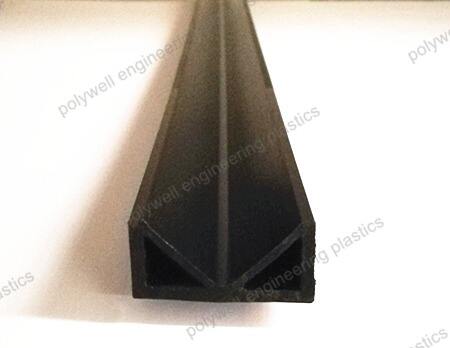
With the growing concern about energy conservation at the architectural and construction level, the thermal breakout strips have gained popularity. Thermal performance is a strong focus in new research and product development, and POLYWELL’S thermal break strips offer one. ach of these features additionally contributes towards enhancing the overall thermal efficiency of buildings cut in by thermally bridging POLYWELL’s thermal break strips. Not only do these strips increase insulation on construction projects, making it energy efficient, they also promise high durability and comfort to the users.
Thermal bridging is where conductive materials facilitate unwanted heat transfer through the building envelope Thermal bridging is worst because it leads to heat loss which can in turn cause discomfort to the people living in it and add extra energy costs due to valuable heat being wasted. These POLYWELL thermal break strips manage to stop this permanently. As strips can be contained within aluminum frames and structural interiors and use minimal thermal bridging to cut down the reliance on heating systems and cooling vents.
What is even more interesting is that thermal break strips do not only improve the energy performance of the building; help manage the moisture content in the buildings. The most famous example is when warm air saturated with humidity comes in contact with cold surfaces which causes moisture accumulation resulting in mold formation and material deterioration. POLYWELL thermal break strips also assist in the control of surface temperatures and consequently, the possibility of condensation forming. Moisture control is an important part of ensuring that the houses are healthy for the occupants while ensuring that the building is protected.
POLYWELL thermal break strips play an important role in sound insulation as well, which is an essential feature. Residents of urban areas are constantly troubled by noise pollution which is a valid reason for complaints. The heat break strips on the walls give an additional layer thereby reducing sound transfer from the outside which creates a more peaceful atmosphere indoors. Especially for the occupants in a residential building who cherish a peaceful sanctuary, such a feature will be advantageous.
The POLYWELL thermal break strips are used in different applications due to their versatile capabilities. They can be effortlessly used with aluminum, wood or PVC framing systems. This versatility allows architects and builders to come up with appealing designs while still meeting energy performance standards. With the use of thermal break strips, the energy efficiency and longevity of the structure is not compromised whether it is a skyscraper or a one family home.
The trend of environmentally-friendly products is a growing concern in the construction work, the POLYWELL thermal break strips are in consonance with this trend. These strips assist builders in reducing project energy needs and carbon emissions, thus achieving sustainability aims. This is not only good for the environment, it is also appealing to purchasers who are looking for energy-efficient products for their houses and other buildings.
POLYWELL thermal break strips are not just effective, but are also designed to be long-lasting. They are resistant to UV degradation, moisture and high temperatures, allowing them to be effective over extended periods. With these good restoration qualities, rehabilitation and maintenance requirements are lower and less frequent, to the benefit of builders and property owners.
Installation is quite easy with POLYWELL thermal break strips. These strips are designed in such a way that they can be easily integrated into the existing construction, thereby saving on time and cutting back on labor costs. This feature makes sure construction processes do not reach a standstill as the company does not want to keep its clients waiting for completion of their projects.
In essence, POLYWELL thermal break strips emerge as one of the most critical building elements of the 21st century. The thermal bridging is almost eliminated, moisture is better controlled, and some even contribute to sound isolation which makes these strips the complete package in energy efficiency. The flexibility, environmental friendly, and ease of installation qualifies these strips as the best option for builders and architects who want to construct high-rise buildings since it is most suitable in the modern environment protecting its inhabitants.